Spendthrift Trusts that benefit debtors can raise tricky issues for bankruptcy lawyers and trustees, especially in California where spendthrift protection for beneficiaries is limited to 75% of the payments they would receive, leaving 25% available for recovery by a bankruptcy trustee. ((See Cal.Prob.Code Sec. 15306.5(a). But note that California law also allows spendthrift trust payments to be reached, up to a maximum of 25%, to pay claims for spousal or child support, restitution for commission of a felony, and public support. See Cal. Prob. Code Sec. 15305, 15305.5, 15306.)) The core question for courts, bankruptcy trustees and practitioners is: when are these trust interests property of the estate? ((In this series of posts I am not addressing the self-settled trust where the settlor is also a beneficiary. Spendthrift limitations in these trusts are invalid under California law. See Cal.Prob.Code Sec. 15304(a).))
There also are other key questions. When “contingent events” occur post-petition under a trust, do they trigger Section 541(a)(5)(A) and bring a trust interest into the estate during the 180 days following the filing? ((Unless stated otherwise, all section references are to the Bankruptcy Code, 11 U.S.C. Secs. 101-1330.)) Under California law, what value and exemption questions arise when 25% of a spendthrift trust interest is property of the estate?
These questions generated a great deal of interest among practitioners while I was speaking last fall on a panel presented jointly by the Orange County Bar Association, Commercial Law & Bankruptcy Section, and the Orange County Bankruptcy Forum. ((Issues surrounding Trusts and Spendthrift Trusts in bankruptcy are not necessarily settled areas of Ninth Circuit law. My purpose here is to report on some leading cases in the Ninth Circuit and should not be taken or used as a statement of policy or position on any specific case or future case where I might be serving as the Trustee or as an attorney of record.)) So I’m going to review these questions in a series of blog posts. I’ve also prepared two flow charts, the first of which is posted here.
During the bar program we reviewed three Ninth Circuit cases that inform our views–cases we look to when considering whether a debtor’s interest in a spendthrift trust is property of the estate under Section 541(a). These cases, Neuton v. Danning (In re Neuton), ((922 F.2d 1379 (9th Cir. 1990).)) In re Coumbe ((304 B.R. 378 (9th Cir. BAP, 2003).)) and In re Spencer ((306 B.R. 328 (CD of Calif., 2004).)) each add some clarity. The opinions deal with two types of trusts that include spendthrift clauses: the inter vivos trust and the testamentary trust.
Perhaps the most common type of spendthrift trust we see in bankruptcy is the inter vivos trust set up by the parent(s) or other relative(s) of the debtor. It is often fully revocable (as in Spencer), but may also be irrevocable with various contingencies that may delay or even prevent a debtor from sharing in the trust (as in Neuton). The inter vivos trust is created and funded while the settlor is alive, so it is sometimes referred to a living trust.
A very different animal is the testamentary trust which is not created or does not take effect until the grantor dies (and often as part of a will). ((Id. at 334.)) This was the type of trust addressed by the Ninth Circuit BAP in Coumbe. They are generally treated like wills for purposes of bankruptcy.
Of course, regardless of whether a trust is testamentary or inter vivos, the question of whether the debtor’s interest can be excluded from property of the estate through enforcement of a spendthrift limitation is resolved in the affirmative by Sec. 541(c)(2):
“A restriction on the transfer of a beneficial interest of the debtor in a trust that is enforceable under applicable nonbankruptcy law is enforceable in a case under this title.”
When asking whether a spendthrift trust interest is property of the estate, we first consider which type of trust we are dealing with (see above) and then ask–
What contingencies stand between the debtor and the debtor’s right to receive money or property from the trust on the petition date?
Perhaps the most important corollary question is whether the trust is revocable either in whole or in part? And if there are contingencies affecting the debtor’s right to payment, we must also ask whether Sec. 541(a)(5)(A) applies to any contingent event or payment from a trust that occurs within 180 days of the Petition?
In the case of testamentary trusts, the first question and its corollaries are easily resolved. We just look to whether the grantor died pre-petition. If so, this is the contingency that, having occurred, transfers the trust interest to the beneficiaries and makes the trust irrevocable. Of course, there may still be contingencies standing between the debtor and her right to payments, but it does not appear that these contingencies will remove the debtor’s interest from the bankruptcy estate.
This conclusion is evident from the facts and holding in Coumbe ((304 B.R. at 380, 381.)) where the grantor had died before the petition. The only questions for the Court were whether and how the spendthrift provisions removed the asset from the estate. Of course, with testamentary trusts, Section 541(a)(5)(A) will apply to bring the debtor’s interest into the estate if the grantor dies within 180 days of the bankruptcy Petition since this type of transfer is clearly by “bequest, devise or inheritance.” ((An interesting side note to Coumbe is the Court’s holding that a post-petition distribution of “income” from a testamentary spendthrift trust, within the 180-day period in Sec. 541(a)(5)(A), constitutes a “bequest” and becomes property of the estate that would not be protected by spendthrift provisions. Coumbe, 304 B.R. at 386. But the spendthrift provisions did protect the principal or corpus of the trust interest and would presumably protect distributions of any kind following the expiration of the 180-day period.))
Turning to the inter vivos trust, the Neuton decision poses a broad definition of when such trust interests are property of the estate by relying on Segal v. Rochelle ((382 U.S. 375, 86 S.Ct. 511, 15 L.Ed.2d 428 (1966).)) where the Supreme Court held that “the term ‘property’ has been construed most generously and an interest is not outside its reach because it is novel or contingent or because enjoyment must be postponed.” ((Id. at 379.))
Using this broad definition of property interests, we learn from Neuton that it is possible for a debtor’s interest in an inter vivos trust to be contingent on future events–events which might prevent the debtor from ever recovering payments or corpus–and yet still be considered property of the estate. In Neuton, one of the debtors was a secondary beneficiary under an inter vivos trust. ((Neuton, 922 F.2d at 1381.)) At the time of the Petition, the debtor’s mother was the primary beneficiary under the trust which was irrevocable (the original grantor had died). The debtor’s interest would remain contingent, with no right to share in the trust, as long as his mother remained alive. But the debtor’s mother died shortly after the Petition was filed.
The debtors had filed a “catch all” claim of exemption ((The claim of exemption was made under Cal. Code of Civ. Proc. Section 703.140(b)(5) and sought to exempt debtors’ interest in “all other assets… to the extent not otherwise listed in specified exemptions… the value of which is $1,135.” The debtors listed the value of the trust interest in the schedules as unknown. See Neuton, 922 F.2d at 1381.)) with their petition. The bankruptcy trustee objected, not to the $1,135 amount of the exemption, but rather to the potential for inclusion of the debtors’ more valuable trust interest under the “catch all” language. So the bankruptcy trustee sought to clarify and limit the exemption claim; and further, he asserted the estate’s claim to proceeds from the trust, asserting the estate’s right to receive 25% of the proceeds pursuant to Cal. Prob. Code Sec. 15306.5(a).
The debtor’s interest in Neuton was held to be property of the estate before the court turned to the question of whether the spendthrift limitation removed it from the estate. Thus, the first lesson from Neuton is that we always face a two part inquiry when dealing with an inter vivos spendthrift trust–“first, whether the contingency removes the trust from the bankrupt estate; second, whether the spendthrift provision does.” ((Id. at 1383.))
I’ll continue this review in the next installment. If you missed the Spendthrift Trust Flow Chart There’s more to this chart and I’ll include it with a future post.
Richard Marshack has served as a panel trustee in the Central District of California for over 25 years. Along with his partner, Ed Hays, he manages an active reorganization and litigation practice, providing representation to debtors, creditors, trustees, creditor committees and related litigants in both the Federal Court and State Courts. Their firm, Marshack Hays LLP, is located in Irvine, California and they can be reached at 949.333.7777.
By Richard Marshack

